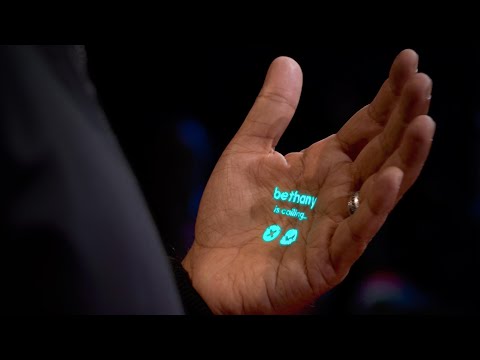A wide range of marketing trends are emerging that redefine how businesses interact with their audiences.
Fueled by recent technological advancements, such as the commercialization of artificial intelligence (AI) products, consumer behavior and expectations are shifting. Keeping your business aligned with these behaviors and expectations will help you stay competitive in a growing market.
This article unveils:
- The role technology plays in marketing trends
- Key marketing trends for 2024
- How marketing trends influence consumer behavior and expectations
- More trends for 2024
By exploring these trends, you can gain insights into adapting your current marketing strategies to stay ahead of the curve.
What Role Do Technological Advancements Play In Shaping Marketing Trends?
Technological advancements influence the trajectory of marketing trends on a massive scale. As technology evolves, it opens new avenues for engaging with audiences, analyzing consumer behavior, and delivering personalized experiences.
Here are some of the advanced technologies marketing professionals should consider harnessing in the coming years:
AI and Machine Learning
These technologies enable predictive analytics by analyzing vast datasets. They can facilitate tailored marketing strategies that resonate with individual consumer preferences.
Voice Recognition Technology
Voice search and smart assistants are burgeoning due to advances in voice recognition technology. This technology has refined the accuracy and responsiveness of voice search, making it a convenient and accessible alternative to traditional text-based searches.
Ethical Algorithms
The trend towards ethical marketing is also intertwined with technology. Ethical algorithms can help businesses ensure their digital practices adhere to the desired ethical standards and values. This will foster consumer transparency and trust.
Augmented Reality (AR) And Virtual Reality (VR)
Along with other wearable technologies, AR and VR are at the helm of creating immersive brand experiences. These technologies provide engaging and memorable encounters beyond the two-dimensional digital interface.
Blockchain Technology
Content exclusivity and membership models are gaining traction, with blockchain technology providing a secure and transparent platform for managing exclusive content and membership access.
Neuromarketing Technology
Advancements in neuroscience and psychological analysis tools have birthed neuromarketing, enabling a deeper understanding of consumer behavior and more effective marketing strategies.
Diversity, Equity, And Inclusion (DEI) Tech Tools
The increased focus on DEI is supported by technologies that help analyze and mitigate biases, ensuring that marketing practices are inclusive and equitable.
These instances underscore the symbiotic relationship between technology and marketing trends. As businesses gear up for the next year, embracing these technological advancements can provide a competitive edge – ensuring their marketing strategies remain effective and engaging.
Let us dive into five emerging trends that will take center stage in the coming year.
Trend #1: Hyper-Personalization
With AI technology now at the consumer’s fingertips, businesses are also moving away from generic marketing approaches toward more individual-focused strategies.
This trend leverages AI and machine learning (ML) to analyze extensive data sets and predict customer behavior.
Predictive analytics, an application of AI, enables businesses to foresee customer needs, thus facilitating the delivery of personalized offers and experiences at the individual level.
This level of personalization goes beyond merely addressing the customer by their first name. It is about curated recommendations, personalized offers, and individualized content that resonates with the consumer’s unique preferences and behavior.
The data-driven insights provided by AI and ML allow for an in-depth understanding of customer preferences at a granular level. This enables marketers to craft marketing messages that are highly relevant to individual customers, significantly enhancing engagement and conversion rates.
Hyper-personalization is not a fleeting trend but an evolution in marketing that’s becoming necessary. It is a sophisticated approach that requires investing in advanced analytics tools and committing to collect and analyze customer data to drive personalized marketing strategies.
Businesses looking to stay competitive and enhance customer satisfaction in the coming year should consider investing in technologies and strategies that facilitate hyper-personalization. Doing so can foster stronger customer relationships, improve customer loyalty, and boost your bottom line.
Trend #2: Voice Search And Smart Assistants
Voice search has been on the rise for several years. Many consumers use digital assistants like Amazon Alexa, Google Assistant, and Apple Siri to interact with brands. Currently, AI-powered wearables are being developed to enable smart technology to continue enhancing our lives “in the background” – invisible technology, as columnist Walt Mossberg called it.

The accessibility of voice search makes it a key role player in future consumer markets. It provides a hands-free, fast, and user-friendly way to obtain information or make purchases.
The evolution of voice search technology significantly impacts Search Engine Optimization (SEO). Traditional keyword phrases might not capture the natural language used in voice search queries.
For instance, a user might type “best pizza near me” into a search engine but ask a smart assistant, “Where can I get the best pizza in town?” The difference in phrasing necessitates an adaptation in SEO strategies to accommodate this conversational aspect of voice search.
As a marketer or business leader, one of your primary considerations in the coming year could be producing online content optimized for voice search. This entails using long-tail keywords that reflect the conversational nature of voice queries and providing clear, concise answers to common questions.
Incorporating a Frequently Asked Questions (FAQ) section on your website and optimizing your local SEO can also contribute to better visibility in voice search results.
The voice recognition tech market is expected to grow to $50 billion by 2029, according to Statista.
Learn more about and try to understand the distinct algorithms used by different smart assistants and adjust your content strategy accordingly. Each smart assistant has its own Natural Language Processing (NLP) algorithm, and understanding these nuances between tools can give you a competitive edge.
The progression towards voice search reflects a broader trend of technology becoming increasingly integrated into daily life, demanding a re-evaluation and adaptation of traditional web-based SEO strategies.
Trend #3: Ethical Marketing
With access to more technologies, consumers are more knowledgeable and discerning when making buying decisions. They tend to seek out and engage with brands that share their values and demonstrate a commitment to ethical practices.
With growing concerns over personal data privacy and security, ethical marketing is becoming a core aspect of how businesses build and maintain customer trust.
Ethical marketing encompasses a broad range of practices, including:
- Local and international data collection and storage compliance (e.g., GDPR, FADP, CCPA, etc.)
- Protecting consumers from making unnecessary debt
- Transparency in business operations
- Fair treatment of stakeholders
- Commitment to social and environmental responsibility
It demands that brands are clear about their values and act in accordance with them, engaging in honest advertising and promoting social causes that align with their mission.
Transparency is a crucial component of ethical marketing. Brands that are open about their practices, including sourcing, labor policies, and environmental impact, are likely to build stronger relationships with their customers.
53% of people feel connected to a brand when its values align with their own, according to Sprout Social.
This transparency often extends to advertising and promotional practices, ensuring that marketing messages are honest and not misleading. Marketing messages should also not encourage consumers to take unhealthy actions, such as eating fast food at every meal.
Moreover, the rise of social media and online reviews has made it easier for consumers to share information and opinions about brands, making ethical marketing necessary for maintaining a positive reputation.
Incorporating ethical practices into marketing strategies is about building trust and standing out in a crowded market. As consumers become more socially conscious, they are increasingly likely to make valuable long-term investments in their chosen brands.
Trend #4: Ephemeral Content
Ephemeral content is rich media, primarily images and video content, that are only accessible for a brief period. The ‘Stories’ short-form video format introduced by Snapchat and later adopted by TikTok, Instagram, and Facebook is a prime example.
Often produced as user-generated content (UGC) on social media channels, it is seen as more authentic and encourages audience engagement. It is an important communication channel in influencer marketing to engage potential customers in a conversational manner.
For brand marketing teams, ephemeral content will continue to gain traction as it aligns with consumers’ desires for authentic interactions with brands. Unlike polished, permanent posts, ephemeral content is often raw and unedited, giving audiences a real, unfiltered view of businesses and their values.
Moreover, the temporary nature of ephemeral content creates a sense of urgency and exclusivity, which can drive higher engagement rates. If your content is informative and rewarding, your audience will make an effort to view and interact with it before it disappears. Timeliness is key and can create a dynamic and engaging customer experience.
Ephemeral content is not confined to social media platforms. Other digital platforms are exploring integrating ephemeral content to enhance user engagement. Its transient nature offers a unique way for brands to share timely information, offers, or updates and encourage customer interactions.
As platforms continue to evolve and introduce new features, businesses should prepare to leverage these marketing channels to create engaging, authentic, and timely experiences for their audiences.
Trend #5: Interactive Content
Interactive content has long been a cornerstone for engagement in digital marketing strategies. But many brands have not yet tapped into this type of visual content as a marketing tactic.
Businesses can foster a deeper connection with their audiences by utilizing interactive content such as polls, quizzes, and interactive videos.
How? This type of content not only captures attention and provides entertainment but also encourages active participation. This can provide valuable insights into consumer preferences and behaviors via the first-party data they provide.
This digital marketing trend will continue to evolve in the coming years, with emerging technologies enabling more sophisticated interactive experiences. For instance, gamification is increasingly integrated into helpful content, providing immersive experiences that significantly enhance the customer journey.
The data collected through interactive content can be a goldmine of insights. Marketers can refine their strategies by analyzing how individuals interact with this content, ensuring they resonate with their target audiences.
This feedback loop creates a more personalized and engaging user experience, which is crucial for building and maintaining customer loyalty.
Interactive content can significantly enhance the user experience on digital platforms. For example, interactive videos and games can provide a more engaging and informative experience compared to static images, as viewers can interact with the content in real-time.
Engagement is a key metric for the success of digital marketing strategies, and interactive content plays a pivotal role in achieving this objective. By investing in interactive content, businesses can create more engaging and meaningful interactions with their audiences, which is crucial for achieving your marketing objectives.
How Do Marketing Trends Influence Consumer Behavior And Expectations?
Marketing trends are not merely a reflection of the evolution in the marketing domain; they significantly impact consumer behavior and expectations.
As businesses adopt some of the marketing trends discussed in this post, consumers’ interactions with brands and their expectations will also evolve.
How Marketing Trends Shape Consumer Expectations
- Personalized Experiences: With increasing personalization and hyper-personalization, consumers now expect a tailored shopping experience. They anticipate brands to understand their preferences and provide personalized recommendations, offers, and content.
- Ethical Conduct: The shift towards ethical marketing has cultivated a consumer base that values transparency and ethical business practices. Consumers are more inclined towards brands exhibiting social responsibility and ethical conduct.
- Accessibility: Voice search and smart assistants have set a precedent for easy and quick access to information, altering consumer expectations for swift, straightforward interactions with brands.
How Marketing Trends Influence Purchasing Decisions
- Interactive Content: Engaging content such as polls, quizzes, and interactive videos can significantly impact purchasing decisions by providing valuable insights and creating a more engaging shopping experience.
- Exclusivity Appeal: Content exclusivity and membership models can incentivize consumers to engage with a brand directly.
- Informed Choices: With the rise of ethical marketing, consumers are more informed and often consider the ethical implications of their purchases.
- Authentic Engagement: Ephemeral and interactive content foster authentic engagement, enhancing brand loyalty and encouraging repeat business.
- Shared Values: With an increased focus on DEI, consumers expect brands to show how they align with societal values that matter to them. Potential customers may choose brands based on mutual affiliation with social justice causes.
Consumers are informed and discerning, and the prevailing marketing trends significantly influence their behavior. As these trends evolve, they shape the narrative of brand-consumer interactions, molding consumer behavior and expectations in the process.
More Marketing Trends For 2024
Trends like hyper-personalization, voice search, ethical marketing, ephemeral content, and interactive content lead the charge. But the marketing landscape is vast, and these trends merely scratch the surface.
We will soon release a comprehensive eBook that delves deeper into more emerging pivotal trends in marketing.
Frequently Asked Questions
How do the trends of a particular time period affect marketing?
Marketing trends are indicative of consumer preferences, technological advancements, and the overall direction in which industries are moving. They significantly impact marketing by guiding resource allocation, how to interact with consumers, and what strategies to employ to achieve business objectives.
Adhering to relevant trends ensures that marketing strategies remain effective and resonate with your target audience.
What two trends in the past decade have significantly influenced global marketing?
- Social Media Marketing: The advent and growth of social media platforms have radically altered the marketing landscape, providing businesses with new channels to reach and engage with their audience. Social media marketing has become critical for brand visibility, customer engagement, and even customer service.
- Mobile Optimization: The widespread adoption of smartphones has necessitated the optimization of digital content for mobile platforms. Mobile optimization ensures that websites and digital content are easily accessible and user-friendly on mobile devices, which is crucial as more consumers use smartphones for online activities.
Which marketing trends are shifting the digital marketing landscape in 2024?
- Hyper-Personalization: The application of AI and ML for predictive analytics enables more personalized marketing, improving engagement and conversion rates.
- Voice Search And Smart Assistants: The growth of voice search means that SEO strategies will evolve to accommodate the conversational nature of voice queries.
- Ethical Marketing: Consumer demand for brand transparency and ethical practices encourages businesses to incorporate ethical considerations into their marketing strategies.
How can businesses stay updated on emerging marketing trends?
Staying updated on emerging marketing trends is crucial for maintaining a competitive edge. Business leaders can:
- Subscribe to reputable marketing blogs and journals like HubSpot and Neil Patel.
- Follow business leaders on social media. Industry leaders often share their insights on emerging trends via platforms like Linkedin and X (formerly Twitter).
- Attend marketing conferences and webinars. Events like Content Marketing World and INBOUND provide platforms for learning and networking.
- Join professional marketing groups. Associations often provide resources, webinars, and newsletters to keep members updated.
- Utilize online training platforms like Coursera or Linkedin Learning to offer courses on current marketing trends.
What metrics can businesses use to evaluate the impact of adopting new marketing trends?
Evaluating the impact of new marketing trends is crucial for ROI. Key metrics include:
- Engagement Metrics: Monitor likes, shares, comments, and time spent on your content.
- Website Traffic Metrics: Analyze website traffic, page views, and user sessions.
- Conversion Metrics: Track conversion rates, lead generation, and sales metrics like average basket size (ABS).
- Customer Retention Metrics: Monitor customer satisfaction, retention rates, and churn rates.
- Return On Investment (ROI): Calculate the ROI of your marketing campaigns to assess their effectiveness.
How do global events and societal shifts influence marketing trends?
Global events and societal shifts significantly impact consumer behavior and, consequently, marketing trends.
Events like the global pandemic or social justice movements can heighten consumer awareness and influence their expectations of brands. Global events can accelerate digital adoption, influencing how consumers interact with brands. Changes in regulations can influence marketing practices, like data privacy laws impacting digital advertising.
Are there any risks associated with adopting new marketing trends too quickly?
Adopting new marketing trends hastily can have drawbacks, depending on your approach. Implementing new marketing strategies may be flawed without a thorough understanding, leading to ineffective or detrimental strategies.
Rushing to adopt new trends can also lead to a misallocation of marketing resources. Instead of neglecting tried-and-true strategies that have been effective in the past, look for ways to incorporate new technologies to improve your offering, reach a larger audience, or keep your customers engaged.






